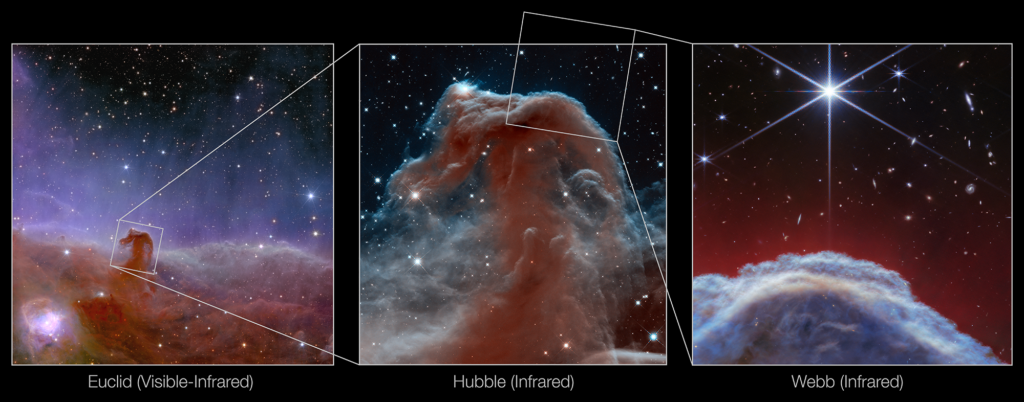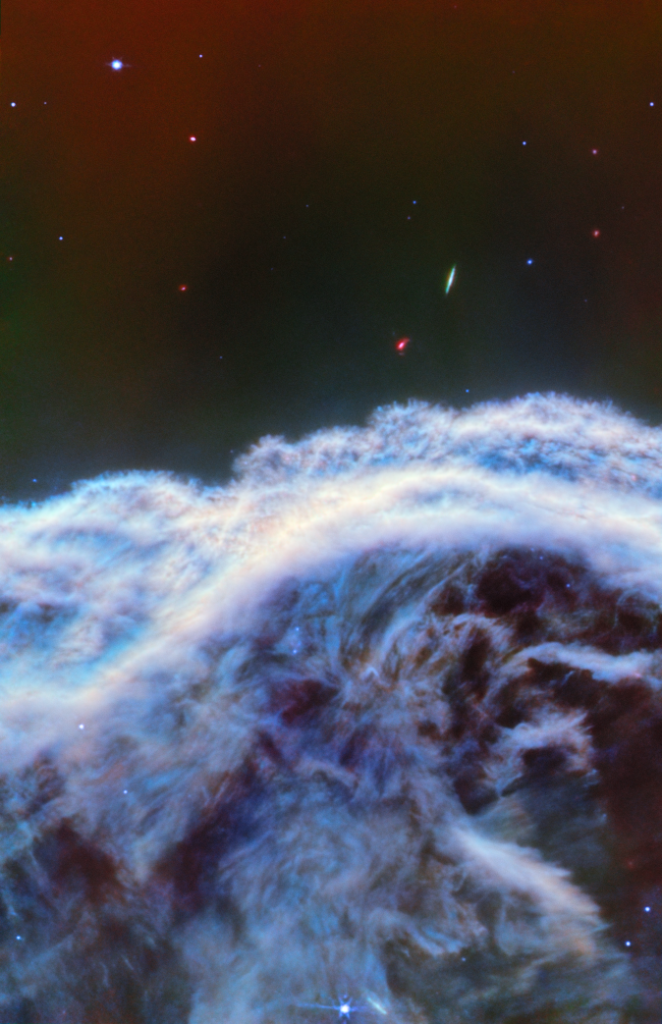NASA released high-resolution images of the Horsehead Nebula that were taken by the James Webb Space Telescope on Monday.
The telescope produced sharp infrared images of the “horse’s mane,” or the top, of the famous nebula, otherwise known as Barnard 33. The nebula is named after astronomer E. E. Barnard, who first discovered Barnard’s Star in 1916. Barnard’s Star is notable because it lies within six lightyears of Earth, making it one of the closest star systems, and many subsequent astral bodies have been named after Barnard.

CLICK HERE TO READ MORE FROM THE WASHINGTON EXAMINER
The images show a portion of the Horsehead Nebula that is about 0.8 lightyears in width and 1,300 lightyears away. The nebula itself is the remnants of a cloud of material, mostly hydrogen, that is slowly dissipating. NASA estimated the nebula has about 5 million years before it completely disperses.
NASA said the interstellar cloud is important for research because it gives astronomers a handy way to study the development of the chemical properties of nebulae.






